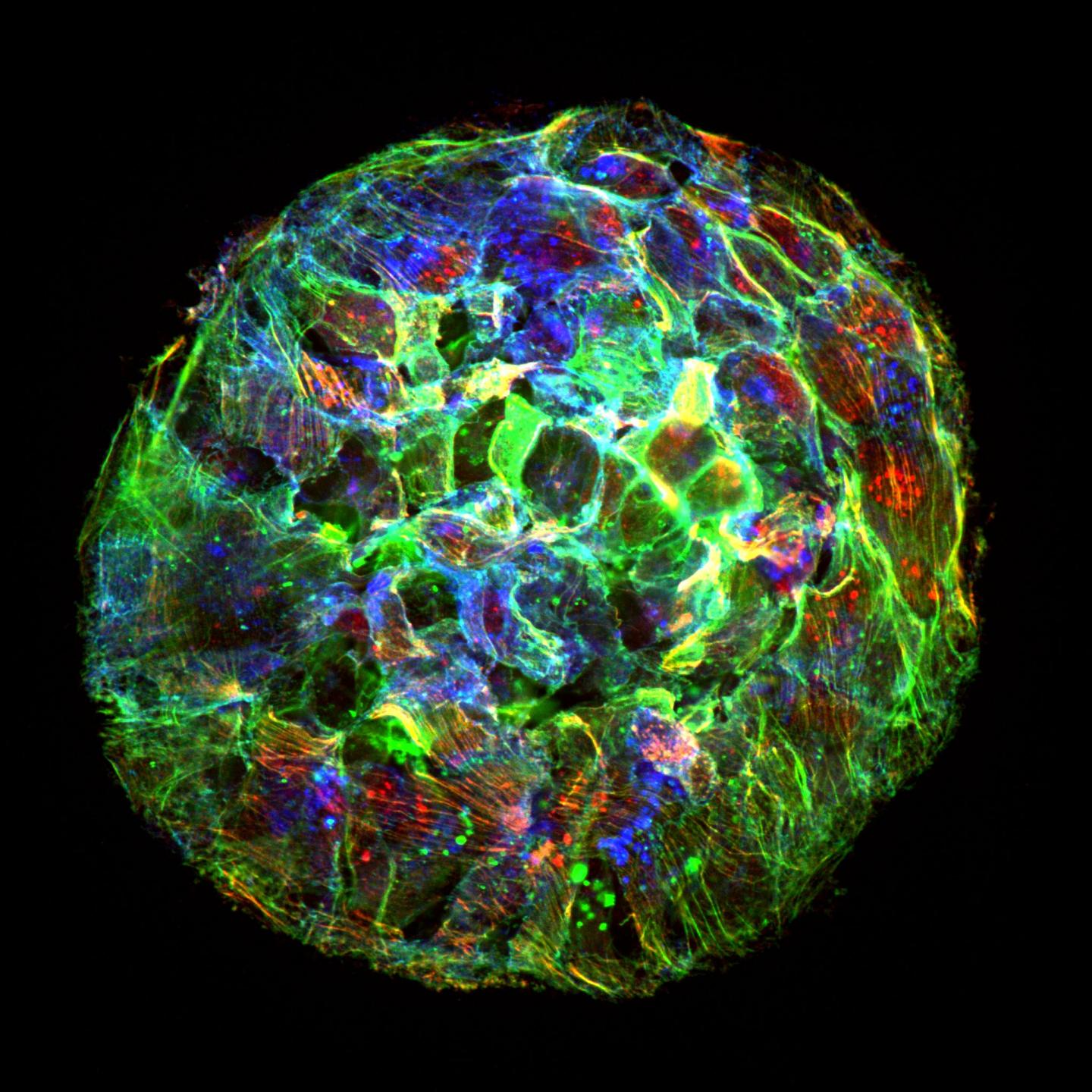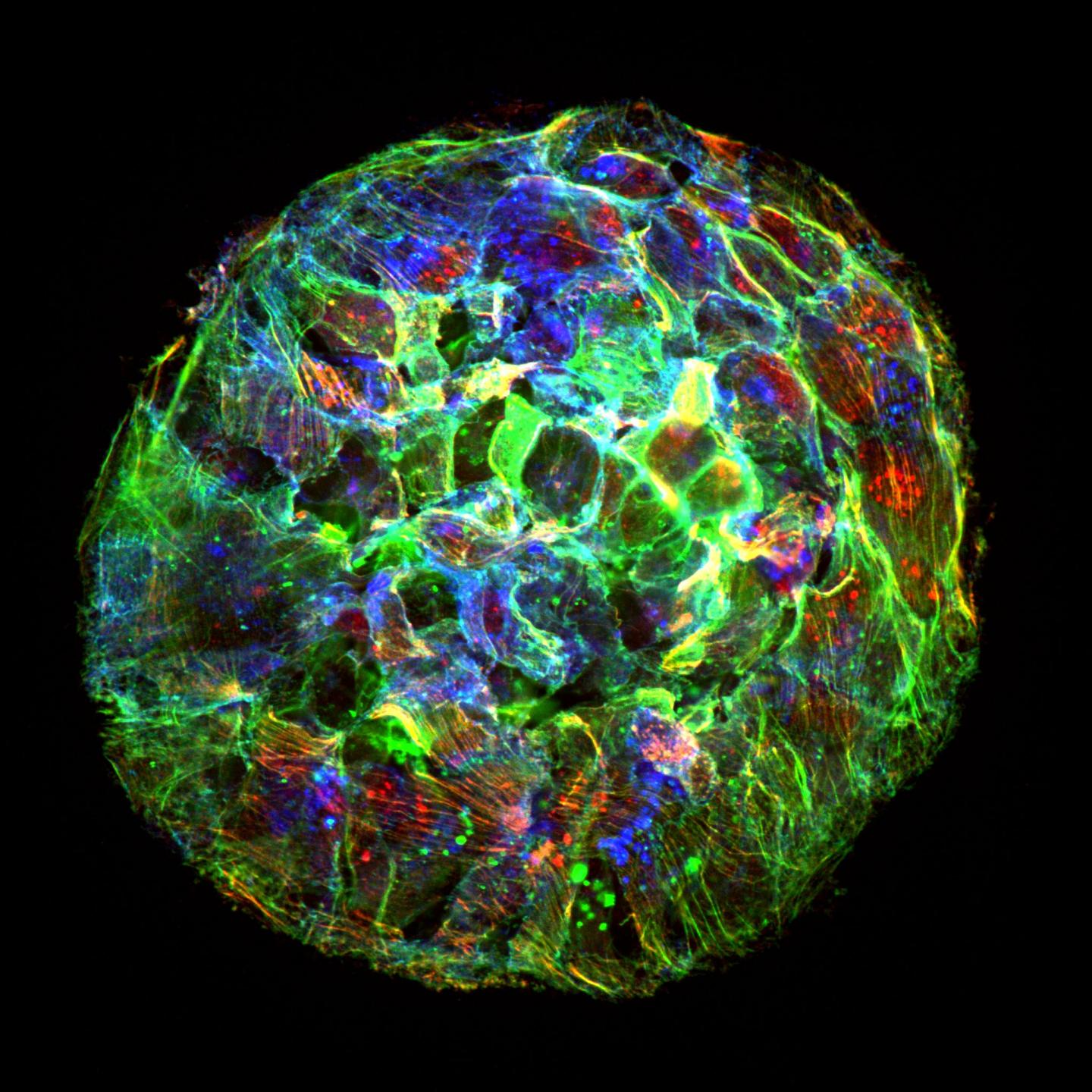
Credit: X. Trepat/IBEC
A malignant tumor is characterized by its ability to spread around its surroundings. To do so, tumor cells stick to the surrounding tissue (mainly collagen) and use forces to propel. The journal Nature Physics published today a study by a team led by Xavier Trepat, ICREA researcher at the Institute for Bioengineering of Catalonia (IBEC) and lecturer at the Department of Biomedicine University of Barcelona (UB), and Jaume Casademunt, professor of Physics at the UB, reveals the forces these tumor cells use to spread. The relation between these forces and the cell movement goes beyond current physical laws.
Researchers put breast tumor cells on a surface rich in collagen and observed how these expanded. Thanks to the technology Trepat's group developed, these allowed them measuring the physical forces that were used by these cells during the process, which has not been observed so far. With these methods, they saw the tumor spreading depends on a competition between forces: cells stick to each other and are kept together, and at the same time, they adhere to the environment in order to escape. Depending on the predominant force, the tumor will keep its spherical shape or it will totally spread around the surface. "It is a similar process to the one when we place drop of water on a surface. In some surfaces, the drop will totally spread, for example on a brick, while when put on other surfaces, the drop will remain spherical, for example on an umbrella waterproof fabric", says Carlos Pérez, IBEC researcher, intern at 'la Caixa' and first author of the article.
Despite the similarities between tumors and liquids, the physics in these two phenomena is very different. "Wetting in surfaces is a core problem in classical physics we understand, but tumors seem to follow very different laws", notes Ricard Alert, UB researcher, intern at 'la Caixa' and co-author of the article. Unlike passive fluids, cells can create forces and move on their own. This turns biological tissues into active fluids, and in particular, tumors into active drops. Therefore, understanding tumor expansion on a surface requires developing a new physical theory that researchers have named "active wetting".
"When we think about state of matter, we usually think about solids, liquids or gases. Our results and other laboratory results point out that living cells do not fit into this scheme and behave like another state of matter, which we call active matter", says Jaume Casademunt. When a tumor appears, cells accumulate mutations and their mechanical properties change. In general, tumor cells lose union between them and gain union with their environment. During tumor growth, the own environment changes too, increasing its amount of collagen and rigidity. "Our experiments show that these changes are enough to put the balance of forces out of order, causing cells to start spreading around", says Xavier Trepat.
These findings show the importance of physical forces in metastasis, opening the window to the development of therapies to alter the mechanics of tumors as a potential treatment.
###
Media Contact
Bibiana Bonmatí
[email protected]
34-934-035-544
http://www.ub.edu
Original Source
https://www.ub.edu/web/ub/en/menu_eines/noticies/2018/09/029.html http://dx.doi.org/10.1038/s41567-018-0279-5





